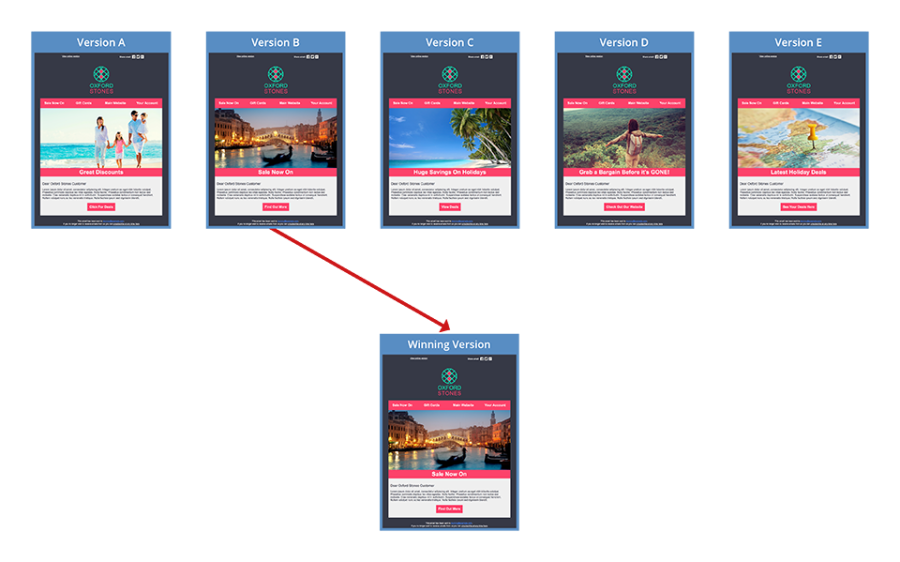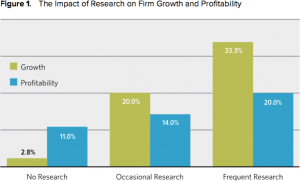
What’s the difference between split testing and multivariate testing? This is a question we often hear from our clients and it can be quite complicated to understand. Hopefully, this article will help to explain what the difference is between a split test and multivariate test and assist you with getting a better response from your email marketing campaigns.
What is Split Testing?
Split testing is the method of testing multiple versions of an email to establish which one is most engaging. Depending on the size of your database, all email versions can be distributed equally to your subscribers to evaluate what improvements are needed for future campaigns.
Alternatively, with larger databases, it would be possible to perform an A/B split test where the versions of you email are sent to an equal, but smaller proportion of your database with the best performing version going out to the remaining subscribers. For example, testing with 20% of your subscribers and the winning email going out to the remaining 80% on your database.
How many versions can you test?
Split testing allows you to run a trial with any number of different versions. Many email service providers allow you to run simple split A/B tests with only two version, but with advanced email marketing platforms like Maxemail you can go a step further and run with multiple.

What can you measure?
Many email marketing platforms measure split tests on opens and clicks alone, but Maxemail also considers conversions and revenue. Take a look at your email campaign reports to see what you can improve on.
As an example, if you’re seeing a low open rate for your email marketing campaigns you may want to test a generic subject line against a personalised subject line to see if this affects your open rates.
Using the split testing tool you can look at other factors that are affecting the performance of your email campaigns, such as time and day of send or the demographics of your subscribers.
What is Multivariate Testing?
Multivariate testing is different to split testing. Here you are testing multiple components within your email to establish which combination is most engaging with your subscribers.
You can choose to have different subject lines, titles, calls to action and more to generate a large number of different email content combinations, which are then distributed equally to your chosen subscribers.

How many combinations can you test?
This is completely up to you and depends on how many subscribers you have to test with. For example, if you want to test three different call to actions, three different titles and three different images then this will create 27 versions of your campaign.
Start off with a small number of different options to keep the combinations low. The more email combinations you generate, the more subscribers you’ll need to test with to add weight to the results.
What components can you test?
With multivariate testing, you can test any component within your email, from the subject line to the colour of your call to action buttons. This is a great way to understand what makes your subscribers tick.
Split Testing vs Multivariate Testing
Split testing is a good way of testing one variable within your campaign, but if you want to test a combination of variables to understand why someone has interacted with your email you may want to consider multivariate testing.
We’ve previously discussed why multivariate testing is vital to your strategy as it’s a great way of understanding what combination of components really work within your email marketing campaigns.
Digital & Social Articles on Business 2 Community(78)








